|
Fall is a time for tallying up the season's harvest, for storing roots and cabbages and bulbs, for composting the refuse and the offal of the season, for cleaning and putting away equipment. Lisa and I, too, have been tallying and storing and composting and putting away this season, and seasons past, in our minds and hearts.
We have taken time this Fall to take stock of the many blessings and challenges of running a CSA farm. It is almost 10 years now since Good Work Farm CSA was planted in the Lehigh Valley. In that time we have met many wonderful families and neighbors that have become friends. CSA had given us encouragement and financial support when things have not gone as planned and praise and admiration when we have farmed our best. CSA has helped us to purchase equipment and our small farm in Nazareth. CSA also requires an immense year-round time commitment to planning and planting and weeding and harvesting of a complex system of over 60 different types of vegetables. As we look forward to the next 10 years of Good Work Farm we have decided to simplify and specialize. We will focus on a less diverse crop mix, including a higher percentage of perennials. We believe this will better help us in meeting the expectations of the land, as well as give us time and energy to pursue other callings we feel drawn to. So it is with a heavy heart, heavy with gratitude, heavy with joy, heavy with excitement, & heavy with sorrow, that we announce that we will not be running a CSA for the 2020 season. We thank you all from the bottom of our boots to the tops of our straw hats for your support over the past years. We will keep you posted as it gets closer to Spring, but here's what we're cooking up for 2020 so far:
2 Comments
We fully acknowledge that the top of your shopping list this time of year might not include local June strawberries, July zucchini, August tomatoes, or September salads. But, we're here to invite you to put a 2019 CSA share to the top of your list. Give yourself and your family the gift of gathering around a table of healthy meals all growing season long. Why now? We're gearing up, planning fields, buying seeds, and hiring employees for the 2019 season. Your commitment now gives us the confidence and peace of mind as we plan and prepare to grow food for you and your families for 24 weeks next Spring, Summer, and Fall. Your commitment now offers us the gift of partnership in this endeavor of growing & eating food. Your commitment now enables us to focus more of our energy on being the best farmers that we can be, to provide your tables with the healthiest, freshest, and most eye-catching, mouth-watering array of food & flowers, grown right here in your community. The end of the growing season gifts us time to pause and reflect, perhaps 2 of the most important fertilizers for our farm. After a deep sigh of relief and prayer of thanks that we made it through, the past weeks have found us inventorying seeds, catching up on book-keeping, laying out the crop plan for 2019, stocking the farm stand (stop by!), putting the finishing touches on the high tunnel (see below), sleeping in (a little), socializing (with all the friends we abandoned from March-October), and gathering with other Pennsylvania farmers to reflect on what many are calling the 'growing season from hell'. In short: Winter provides just enough rest and recuperation to get ready to do it all again, hopefully with slightly less infrastructure projects, life changes, and rain. It is true that farmers love to complain about the weather: too hot, too dry, too wet, too cold, late Spring, snow in April, early frost. We've got a pretty good reason to though: our livelihoods depend on it. Last week we gathered with over 50 farmers, many from the Lehigh Valley, mostly vegetable growers, mostly organic or sustainable in methodology. Every year, this one-day advanced-grower winter workshop leaves me feeling like I belong to a crew of superheroes: we walk around all day in dirty, ripped Carhart's and button-down shirts we found in the thrift store bargain bin three years ago, but secretly (okay, maybe not so secretly) we have the super-power of being able to make carrots out of dirt (with the help of microbes, photosynthesis, & mystery), produce strawberries that just appear out of thin air (over the course of 9 months), and, most importantly, keep a sense of purpose and stay resilient even when dairy prices are declining, 6 inches of rain fall in a 24-hour period, or we wake up again to water falling from the sky during the wettest year on record. This year was not an easy one to farm through, but, as one farmer reminded us, we don't learn from our successes, we learn from our failures. Or, as another farmer put it, all you can do is walk in the sun, with your head held high. In this week's “Lancaster Farming” periodical, a paper devoted to farming news from across the state, the article “Conservation Taking Back Seat to Survival” caught my eye. The article explained how the current crisis in milk prices has left the remaining dairy farmers needing to focus on their finances just to keep their operation running, rather than invest in environmental upgrades toward conservation programs to prevent nutrient run-off and erosion. Aside from reflecting on the devastation of the dairy industry, my instinctual response was to feel a sense of blessing to run a farm where conservation and survival go hand-in-hand. As organically-minded farmers, conservation practices are not separate from marketing strategies. Our community supports the work we do because of our commitment to practices healthy for the environment, the community, the ecosystems around us, and the health and well-being of the families who we feed.
When you eat food from Good Work Farm, you are helping to keep a working farm in your neighborhood, and you are helping to keep farmers in your community whose efforts go toward caring for their soil, creating pollinator habitat, and sequestering carbon through cover cropping. Aside from just healthy food, we provide value to this community, but we do not do so alone. Good Work Farm would not be here without our CSA members committing to be a part of these efforts in conservation and stewardship. For this, we thank you. And we hope you'll do it again in 2019, so we can too. *If our CSA share is out of your budget, please contact us to set-up a payment plan which meets your economic needs. Your Farmers, Lisa & Anton Almost every season is garlic season--the bulbs can be harvested fresh sometime by the end of June or kept in the ground & harvested for storage sometime around mid-July, to supply our household (and CSA!) with garlic until sometime around February or March, when they start to get a little sprouty. But soon enough, we start harvesting the young garlic shoots whole as scallions, quickly followed by the flowering tops as scapes. So garlic is always in season. Toward the end of winter, when I still have a stock-pile and the garlic wants to sprout (Spring is coming!), I enjoy these recipes as an easy way to keep garlic on-hand for immediate use. We love having roasted garlic in a jar in our fridge to throw into or onto pizza, pasta, rice, soup, lasagna, stir fry, sauces, mac-n-cheese, or anything you please! We use toasted garlic, ground in a spice grinder, as a dry rub for meats, or in marinades for veggies. (This also makes a great gift when packed in a mason jar and tied with a ribbon!) And nothing warms up the house quite as much as winter pizza night. This garlic & herb pizza crust is my all-time favorite for homemade pizza crust (though it makes a good bread too), topped with roasted sweet potatoes, home-grown tomato sauce, local sausage, pesto from the freezer, and of course cheese. To make Roasted Garlic, turn the oven to ~400 degrees. I usually roast my garlic just whenever I am lighting the oven to roast other vegetables or bake bread, so the temperature is not firm. Trim the roots (if necessary) and use a knife to cut the tops off the cloves (while still attached to the head), so that the cloves are exposed. After prepping all of your heads, arrange in a pan with roots down. Fit the heads in so they sort of hold each other up. You can use a deeper pan if you want to submerge in olive oil completely in order to make roasted garlic oil to use for dressings and marinades. I prefer not to submerge (which uses less oil). If not submerging, drizzle a generous amount of oil on top so that it gets into the cloves as much as possible. Sprinkle with salt. I also add a tablespoon of water. Cover with foil, and roast for 30-40 minutes, or until cloves are soft through and through. After cool, remove cloves from paper by hand and store in a jar in the fridge. They will keep for several weeks. Toasted Garlic takes a good bit of preparation, but will keep indefinitely and is convenient to have on hand for garlic flavor without all the cutting. Peal garlic without squishing the cloves. Cut into approximately 1/4" squares, as uniform as possible. Meanwhile preheat a cast iron pan, either on the stove or in the oven until hot but not smoking. Do not use oil or fat in the pan. Make enough garlic squares to cover the pan with a single layer, but not more. Toss the garlic into the pan and stay close by. Continue to toss the garlic in the pan, being careful not to burn the garlic, until it is a toasty brown. At first, it will seem to stick to the pan, but as it toasts and dries, it will be less sticky! Cool on a plate. Toasted garlic can be used in a salt/pepper grinder, or ground with a mechanical spice grinder into a powder--makes a great seasoning or rub. This recipe is adapted from Oreganato Bread from Brother Juniper's Bread Book. It can be used as a Pizza Dough or as a bread.
This will make a substantial amount of pizza dough--enough for 4-5 good sized pizzas. You can use half to make a loaf of bread if you want less pizza! 8 cups unbleached bread flour (I use up to 50% whole wheat or Spelt flour) 3/4 cup polenta/ coarse corn meal (optional) 4 T crushed fresh garlic (or, use toasted garlic recipe from above, grind, and use 4 t) 2 t cracked black pepper (can be omitted for the little ones) a mix of fresh or dried herbs, including thyme, oregano, sage, or parsley--if you like herbs, go wild (6 t dried or 6 T fresh) 1 1/2 T instant yeast, or 2 T active dry yeast 4 t sea salt approximately 2 3/4-3 c warm water (will need more for partially whole grain bread) Mix all dry ingredients including the yeast; add the water, saving some for the final adjustment (you might need more). Turn onto a floured countertop and kneed for 10-12 minutes, or until the dough is elastic yet firm, tacky but not sticky. Return the dough to a large bowl; cover with a damp towel or plastic wrap; allow to rise 1.5 hours at a warmish room temperature. Pre-heat the oven to 450 degrees (or hotter!) and preheat a baking stone if you prefer. I prefer to stretch dough by hand* (use a rolling pin for thinner crust), then put it in a non-preheated cookie sheet or cast iron pan, first sprinkled with coarse corn meal. This makes for a much easier process and a soft, dough-y pizza with a very home-made taste. We like to use a LOT of veggie toppings, but don't over-sauce it! *Use ample flour when stretching or rolling your dough to prevent sticking, and allow for an easier process. Rub a little olive oil on the crust, then top, with cheese last. If you're using a baking stone, transfer the pie carefully onto your stone, using a wooden pizza peel well-floured, if you have one. Bake for 6-10 minutes, or more. Broil the top for 1-2 minutes at the end for a crispy cheese top, watching closely to prevent burning. For every week over the past three and a half months I have planned and wanted and intended to send out an email writing these very words: we bought a farm! Why the three and a half month lapse? Well we've been busy... In late June we settled on a 14-acre farm and home in Nazareth. The property includes 12 acres of tillable land with prime soils for growing vegetables, a small home, a four-car garage which we will converting into our vegetable wash area and CSA pick-up room, and an old timber-framed wood barn which, after a face-lift, will one day house Duke, Daisy, and their yearly need of fodder. The past three and a half months have been full: of tasks, of emotions, of decisions, of goals, of to-do lists, of moving stuff. Now, as Autumn announces itself with stunning displays of leaves and cooler nights finally dipping into the 30s, we have our 2018 strawberries planted and fenced for deer protection, 12 acres in beautifully-growing cover crops, an irrigation well dug, and almost all of our farm supplies and equipment moved to our new spot. This sunny Saturday, we were blessed with a mighty crew of workers and volunteers who helped us plant and mulch 6000 bulbs of garlic before the rain came. Over the next week, we look forward to moving our horses and ourselves to their and our new home, and all settling in for winter. 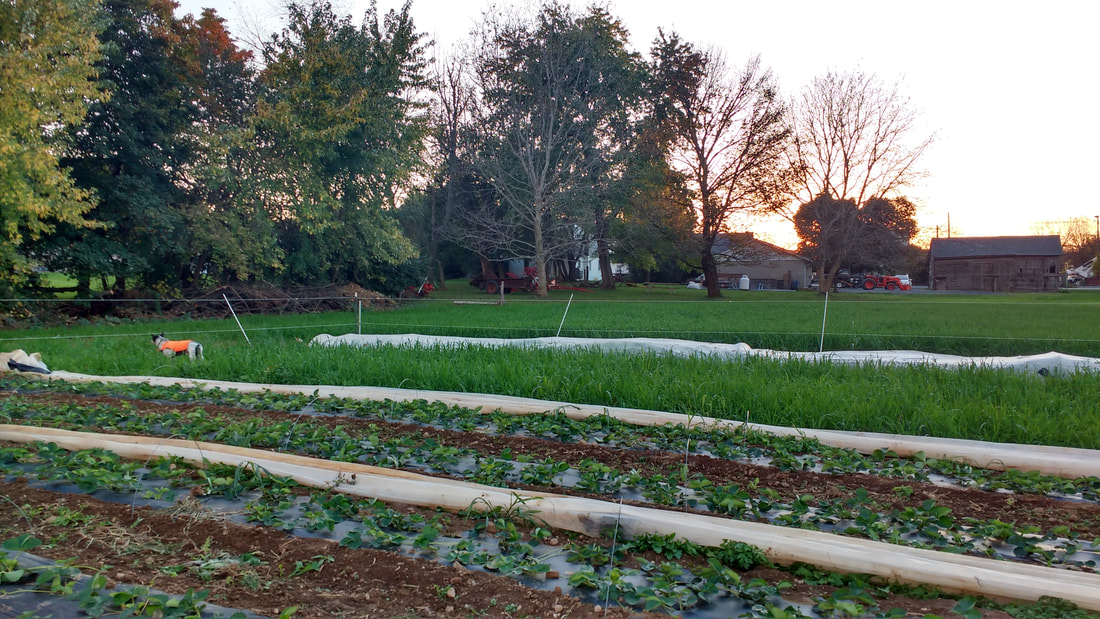 We'll keep our hands busy and backs strong for the remainder of the fall erecting our greenhouse (for starting seedlings) and high tunnel (for growing tomatoes and other crops with the added protection from the elements and warmth from being grown in a plastic house), doing some "light" house remodeling, and organizing all of our farm supplies in preparation for the work ahead. We feel blessed to be here in this place, readying ourselves and our land to delve back into running Good Work Farm in 2018.
Despite our hopes, you probably noticed we moved our farm further from our Zionsville community of members than we had wanted. In light of this, we are in the midst of finalizing details on a Zionsville drop location for our 2018 CSA season. Details coming soon! We look forward to continue including our Zionsville families in our new farm, both by bringing vegetables to you each week, and by inviting you to come to the farm for seasonal festivities, human, equine, and canine visits, or just to get your hands in the dirt. We will continue to offer on-farm CSA pick-up on our farm in Nazareth, including the you-pick garden of herbs, flowers, berries, and more. No matter the distance, we look forward to welcoming you to our farm; whether as CSA members, volunteers, or visitors, we are working steadily to transform our place into one that can be a place of comfort, exploration, sustenance, and of course flavor for our immediate and extended communities. Look forward to farm work parties, potlucks, open-houses, bonfires, and other events in 2018 and for seasons to come. We wish each of you a cozy Autumn; stay tuned for CSA information for the 2018 season coming over the next week or two- both for Zionsville and Nazareth locations, and feel free to be in touch with questions or hellos. ~Lisa & Anton 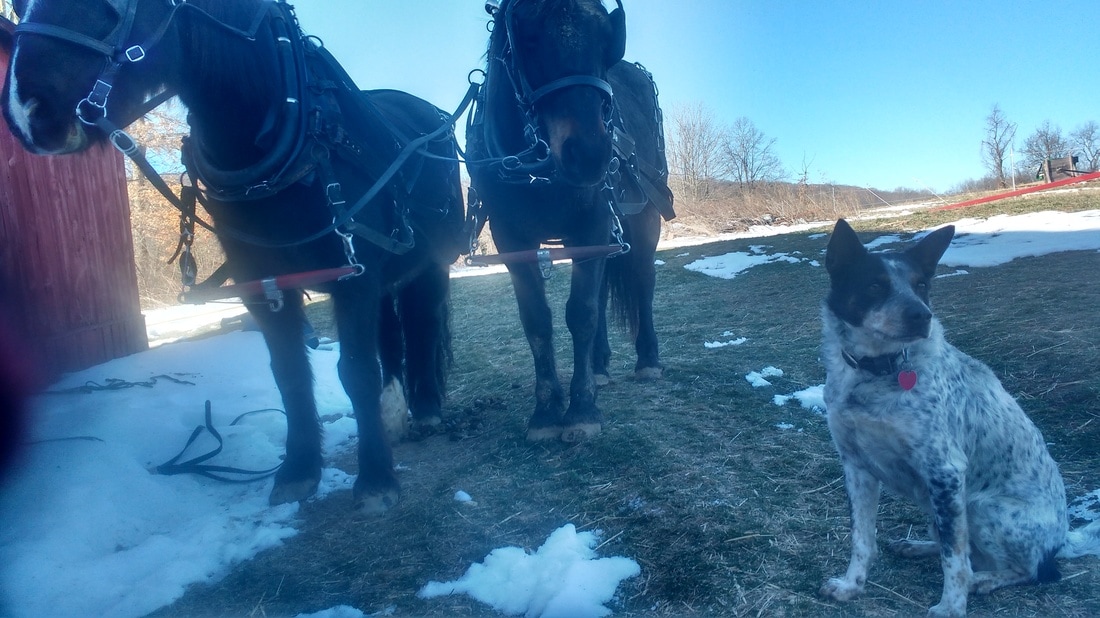 In the quiet, stillness, of winter (which some days this year felt a lot like Summer), and now the longer-days of Spring (which some days have felt a lot like Winter), we await the unfolding of what is to come. But if waiting implies passivity, than I am mistaken, because we are busy in our waiting. What does a vegetable farmer do in Winter? We're asked this a lot in fall, when we're as well-worn, dirty, and broken-in as our work pants, and fantasizing about a couch, a bubble bath, a cup of tea, and a three-month-long date with Quickbooks and Excel Spreadsheets. The answer is some combination of: plan, buy, think, budget, market, plan some more, and buy some more. We work to craft a crop-plan for the Spring that will allow for flow, grace, mistakes, and schedules to be more-or-less followed while honoring the individuality of the season. But this particular Winter, our schedule and goals are a little different. What does a farmer who is pausing from their farming do in Winter? Though it is true we are stepping back from the direct activity of running Good Work Farm in this next growing season, we are actively building the vision of a farm that could sustain our family and this community for years to come. We have found a piece of land, a willing seller, and are working towards a creative model of land tenure that will keep resilient farming alive in Zionsville, and farmland affordable for farmers, for this generation of young farmers, and those that come after us. Aside from fulfilling our mission of securing a permanent home for Good Work Farm, Anton will be working for John and Aimee Good of The Good Farm CSA for this growing season; Lisa will be working for Switchback Pizza, The Good Farm, and Ledamete Farm. We bear generous visions for ourselves and this eating community, and hold them with the faith that our CSA members—families who have been with us for 6 seasons and members we have yet-to-meet—will want to eat the food we grow in years to come. Our CSA community is a community of people who value food that comes out of their landscape, and have great affection for that landscape. The leap of faith of any small business owner toward launching their vision is frightening; as we transition our farm to a new home over the next year, we face and overcome the doubts that are embedded within a re-imagining of one's self that stretches one's concept of what is possible. What we are asking the universe, our community, and our selves seems pretty darn big: have patience with us as we transition, maintain the faith alongside us that the place we find to situate our farm on will be here, share with us in eating the food of the landscape for whom you feel great affection. As a reassurance to myself, a reminder that what I am doing is not particularly special, not particularly bold, and there is nothing to be nervous about, I recall that I'm just growing food. Humans have been doing it since at least 15,000-13,000 B.C. with the domestication of pigs and rice. If people are hungry for the food we grow and the way we grow it, then people will come eat this food and support our ability to live while doing this work. The knowing where one's food came from and knowing one's farmer formed the concept out of which the “local food movement” emerged. It became cool to go the farmer's market, kale chips became a necessary accessory to any outfit, and farm-to-table became all the rage. But cool always fades; what will take the place of this cool is the reality that local eating offers a practical, participatory, and integral way of living within one's community. A local farmer cannot compete with corporate box stores for pricing, and struggles to contend with pre-measured, home-delivery meals for convenience, but what we can offer is a holistic approach to eating—food that comes out of the place that you call home. Local food is grounding food to eat: it places you within the context of the landscape that sustains you, it spiritually nourishes you by reminding you what it means to be human, it places you in direct economic relationship to your community—the money that you have worked hard to earn can be of benefit to the faces, flora, and fauna you know, it serves the well-being and integrity of your body by offering you rich and trusted nutrition. I live here. You live here. When we eat the food of here, we taste where and who we are, we move ourselves one meal closer toward experiencing the independence that comes with knowing where our food came from, who grew it and how, what it means to them to grow it, and what it means to you to eat it. I do not believe that local food can be a fad, or even a movement. I believe local food must, and will, just become what eating is. Garlic popping out of the ground on March 23rd! 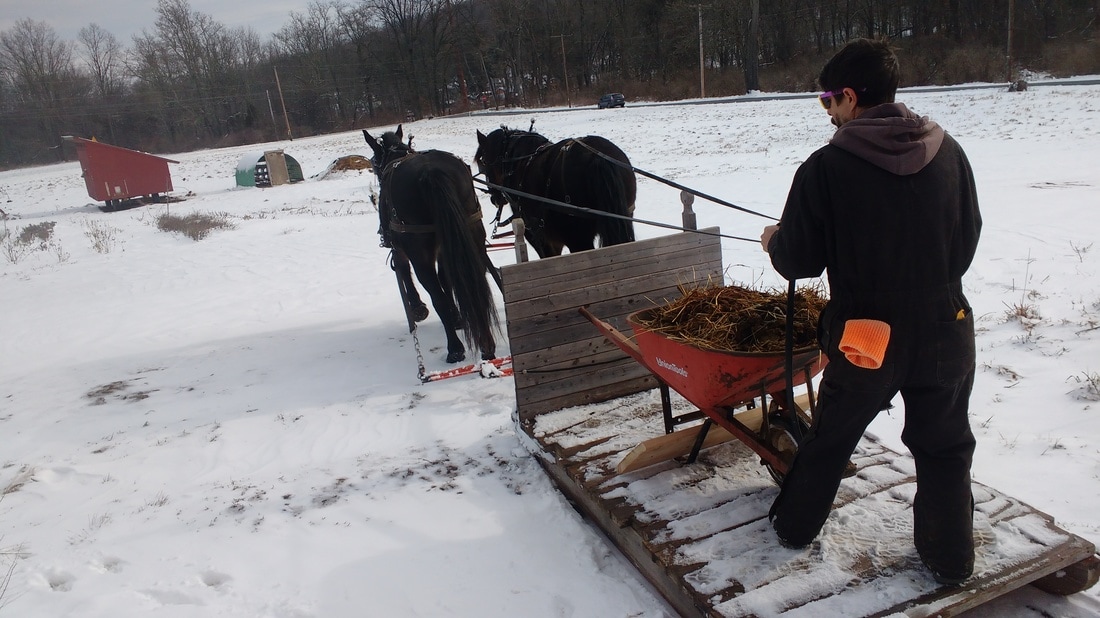 Mucking stalls in the snow... re-inventing the proper winter use of the wheelbarrow.
 To offer food to another expresses a profound insight into the gifted and interdependent character of the human condition. In this offering people acknowledge that as creatures they are beneficiaries of an incomprehensible and costly generosity and hospitality. The clearest sign of this acknowledgement is that people themselves become generous and hospitable with others, offering from themselves and their livelihood what they have already received. To invite others to one's table and share food with them is to communicate that life is not a possession to be jealously guarded. To share food is fundamentally to share life. It is to participate in the nurture and strengthening of the memberships of creation. from Food & Faith: A Theology of Eating, Norman Wirzba Well, we've been holding out on you with information regarding our 2017 CSA Shares, and nearing mid-November, we don't have especially good news to share. After months and years of home-searching, land-searching, & soul-searching, we have decided we will not continue to run Good Work Farm in Zionsville next season. To say we are sad to go would be a supreme understatement. To say this was a hard, complicated, painful, decision where no option we had felt “right,” would only begin to touch the surface of all that we have been holding in our minds and hearts over these past few years, and especially past few weeks. As many of you know, we have been on a quest to find affordable farmland in Zionsville (and beyond) for a number of years now. While we are blessed to have access to farmland here on Rock Road where we have been able to grow for the past 3 seasons, in our hearts we have continued to want and need to find a small piece of land that we could own--providing us with long-term security, investment, and perhaps most importantly, a home. To that aim, we have spent these years trying to connect with folks who own farmland in our immediate community--our goal was to keep our home-base here in Zionsville, to continue to farm the land where Good Work Farm currently resides, and to continue to grow food in service to you, our community, while also building a small spot of our own. For a number of reasons, we have come to believe that we are not able to find land available for purchase here in our current home, and so have decide to move from this place. We intend to spend the next year searching for land beyond Zionsville (and perhaps beyond the Lehigh Valley). Our path forward is not fully clear. Many of you have entrusted us with the work of providing sustenance to you & those you love dearly for the past 1...2...3... 6 years, and we are grateful to have been granted this opportunity. Though we still hold the hope of being able to grow food for you, our community, in years to come, our future opportunities are dependent on where and when we can find land to settle into for the rest of our earthly lives, God-willing. Why do we feel a need to own land? This is a question we have often come up against as we make this decision. Is this a selfish decision to make? Do we have a responsibility to compromise our own needs/ desires in order to serve the community around us? These are complicated questions for us to confront. In the end, we do believe that our needs and yours are one in the same; that we cannot fully do the work of growing food unless we have a home, a nest, a burrow, out of which we can offer good work to those around us. As dirt farmers (or, soil farmers), our intention in doing the work we do is not to make a lot of money. This was never a goal. Sure, we need to make a living, to survive, but the accumulation of wealth? Not realistic on a small scaled draft powered sustainable vegetable farm. Rather, the allure of farming for us has been to create a quality of life where we could thrive as humans. For us, this begins with a connection to the land--land which is our home, land which feeds us and those we love, land where horses & chickens & children & dogs & microbes & fruit trees & vegetable plants & farmers can find nourishment, can eat and live and gather and learn and work and thrive. For us, this means living where we work, housing animals where we sleep, growing food where we eat meals, burying our dead where new lives are born, educating the next generation where we can care for our parents as they age, offering hospitality & generosity to those in need. Side-by-side with questions pertaining to our visions of how we wanted our life to be, were the economic questions of how to increase our profitability in order to run a sustainable farm indefinitely into the future. We acknowledge a need to expand our production, which demands investments in infrastructure which will save-time, save our backs, allow for a smoother flow to our work, and improve the experiences of those who purchase food from us. In order to make these significant financial investments in a property that will allow us to expand and improve our business, we knew we needed to own the property that we would be investing in. After repeatedly not being able to purchase a property in our direct community that would give us an improved quality of life & the possibility to invest in infrastructure for our business, we eventually knew it was time for us to go. Should it not be us, we hope that a wealth of farmers come to this community to grow healthy produce for the people who dwell here. We know the need is here. The need is here for you to have access to greens harvested from the field the same morning they make it to your dinner table. The need is here for your children to have a place to learn what a ripe strawberry tastes like, how to pick peas, what each of the pollinator's favorite flowers are, and that a little bit of dirt really is okay. The need is here for people to connect with land in a smelly, dirty, raw, real, substantial, flower-picking, farm-gathering, potluck-sharing, farmer-knowing, way. We thank you for giving us the honor and opportunity to offer our work to this community. Thank you for supporting our work; thank you for lifting us up on our down days; thank you for trying new vegetables that were weird; thank you for making time in your lives to cook & eat & clean-up from home-cooked meals even when this was never the easy thing to do; thank you for raising the-right-kind-of-spoiled children who demand farm carrots & food filled with the flavor of being in-season. We will miss you. We love you, and we thank you. Your farmers, and friends, Lisa & Anton P.S. If you've got a farm to sell, be in touch; we're looking to buy. Many thanks to Mark Rothman for sharing his GWF photos with us!
"Eating is an agricultural act."
Wendell Berry Dear Members, Family, and Friends, We did it! We got married, we grew some food, we ate some food: we made it through the season together. Congratulations to us all! I hope you found the experience of being a CSA member--either with Good Work Farm or perhaps elsewhere--to be delicious, interesting, fun, experimental, educational, spiritual, and grounding. I hope the sensory inputs of the farm filled you with awe and wonder for the divine (Behold the scent of digested grass decomposing in the summer sun! The sight of sunflowers bigger than your head! The taste of local garlic!), and left you feeling full of your own humanness--tied to the earth in a very real way. 24 Weeks of Harvest: No doubt some weeks stimulated your creativity, some were just boring, some full of the most delectable taste sensations of your year (or life), some went to rot in the fridge (whoops), some were savored, some shared, some stored and are still filling-up your dinner tables in mid-January. In choosing CSA, you are not just choosing local, but also choosing to eat how our species has probably eaten for centuries--with failures, with abundances, with the fate of our dinner, and our health, tied to the earth rather than to the seemingly-infallible grocery isle, where food is seemingly-always available, in season, and exactly the same. Although we all readily notice the superior flavor of farm food, the decision to eat by CSA is still a hard choice, and we should all recognize that in ourselves: farmers, eaters, consumers, growers--we are not making the easy choice when we choose CSA. We have grown accustomed to a diet of ease and availability; while flavor, nutrition, and integrity are sacrificed (among other things), unlimited options are offered as compensation. Through CSA, we are not only choosing local, and choosing to support the successes and unsuccesses of one farm, but also choosing to cook, to experiment, to try new foods, to taste new, strong, flavors. We teach our children to "try everything once" or to "take a no thank you bite," but sometimes, it is hard for us adults to take home that Kohlrabi, Bok Choi, or Escarole ourselves--and then to find a recipe for it, make it, eat it, and convince our partners and children to eat it too. If they haven't already, they'll thank you later. At one point this summer when my adrenals were somewhere beyond taxed and the frustrations of tomato diseases and crop losses felt insurmountable, a close friend and adviser asked me: well, what does "crop failure" offer us: what is the lesson to be learned? The answer came to me immediately: the role of crop failure is to teach us, and our children, that we cannot always have what we want, and that this conditionality is okay and right: it is not an "imperfection" to be fixed by importing food from Somewhere Else or controlling the growing environment more absolutely with synthetic fungicides (Etc. Etc. Etc.). Sometimes, despite effort and hard work, despite extension agents and soil science and fertility and so so much planning, living beings die, and this death is deeply embedded in our living: our own deaths are what make us human, the early death of our plants reminds us that we cannot always control food production: some years we have a shorter season of tomatoes, or lower yields of onions. We learn to eat what thrives, we learn to preserve the abundance, we learn to live without, and we enjoy the ebbs and flows. If you successfully took home, cooked, and tried everything we grew this season, you ate a total of 54 different kinds of vegetables, and at least twice this many varieties of vegetables. In total this year, these 3 1/2 acres in production offered our breakfast-lunch-and-dinner tables: 1,900 bunches of cooking greens 2,900 heads of lettuce over 4,000 heads of garlic over 7,300 pounds of root vegetables 3,500 pounds of tomatoes 500 Quarts of strawberries 1,400 Quarts of Peas and Beans And so much more that cannot be summed up in a number. Thank you for participating in this agricultural act of eating with us. Maybe you've noticed too, the days are getting longer. Despite the cold, the chickens are enjoying those extra 28 minutes of daylight. We're preparing for 2016: the season will be here so soon. We'll likely start the greenhouse seedlings beginning the last week of February, which gives us exactly 6 weeks to hire two employees, make some major purchases to increase our growing efficiencies, flag out and measure our growing fields, set-up and clean-up the greenhouse, build our CSA membership to 100 shares, and maybe even squeeze in a small honeymoon (!). While winter is not quite the whirlwind of summer, we do keep ourselves busy enough. If you haven't sent in your CSA Commitment Form yet, we are not quite full for 2016; we hope you'll join us and encourage your vegetable-loving friends & neighbors to do the same. Happy 2016! To Your Health! Blessings, Lisa & Anton "The real name of our connection to this everywhere different and differently named earth is 'work.' We are connected by work even to the places where we don't work, for all places are connected; it is clear by now that we cannot exempt one place from our ruin of another. The name of our proper connection to the earth is 'good work,' for good work involves much giving of honor. It honors the course of its materials; it honors the place where it is done; it honors the art by which it is done; it honors the thing that it makes and the user of the made thing. Good work is always modestly scaled, for it cannot ignore either the nature of individual places or the differences between places, and it always involves a sort of religious humility, for not everything is known. Good work can be defined only in particularity, for it must be defined a little differently for every one of the places and every one of the workers on earth." Wendell Berry Conservation is Good Work 1991 Dear Members, Family, Neighbors, and Friends,
As self-aware as we may each tout ourselves as being, most of us (who are above the age of 8 or 9) only come to realize things after they have gone and happened. As Spring came in hot and dry, it seems I spent much of April and May waiting for the rain to come before I could pause long enough to take a breath with integrity, a full and deep one saturating the belly and lungs and blood and brain with oxygen and relief. For weeks and weeks I think the air had gotten stuck in a clog somewhere in my throat, which is often not conducive to many activities: thinking, smiling, relaxing, finding joy in the quotidian. Instead of supporting plants to grow, the Spring felt like a trial in getting plants to stay, merely, alive, in getting seeds to, at least, germinate. Anton mastered the irrigation (or as our farmer friend Steve likes to call it, “irritation”) dance: moving hoses, checking pressure, cleaning the filter, running the pump, moving hoses again. And then, there was rain. Alongside the arrival of rain, CSA pick-ups began; members and farmers alike are thrilled to have fresh greens, fruits, and roots in their fridges. Though I probably wrote this last year, and I'll probably write this again next year, it is always an affirmation and a testament to our work to have the many families and neighbors who are a part of our farm arrive and take home these vegetables which we work so hard to grow. Why is this work important? A man driving by called to me from the road, wanting to buy eggs. It was nearing 8 p.m.; I was weeding carrots and waiting for the chickens to go into the coop for the night, so I, too, could go to my coop for the night. He was flabbergasted, and obviously offended by the price, gesturing toward somewhere that wasn't this farm “but I can get them for $2.00!” I started to talk about organic feed and off-handedly mentioned GMOs, quickly running through the gambit: health benefits, humanely raised hens, taste and quality, blah blah blah; I could watch him stop listening to me as soon as I told him how much I needed to make off of a dozen eggs in order to make some semblance of a living, in order to raise and care for chickens in the only way which I believed chickens should be raised and cared for. I walked away feeling disappointed: it wasn't that he wasn't going to buy our eggs, or that he wasn't going to be swayed by my tired and half-hearted response, it was that he appreciated the vision of the farm we worked so hard to create--admiring the hens meandering through forests of clover and rows of onions enough to stop and ask to buy them--but he, like many, did not value these things enough to pay me a living wage to farm them. Farming is work of sacrifice. Farming, like so many other things worth doing: parenting, creating, educating, loving, healing, forgiving, growing beyond the limits one previously set for one's self, is work of sacrifice. Here are a list of things one might sacrifice in order to farm: weekends, nightly dinners together at home, sleep, freedom from the tirades of weather events and one's economic circumstances being tied to said weather events, leisurely Sunday morning pancake breakfasts, summer vacations, financial wealth, the integrity of the physical body. In return, like so many things worth doing, the gifts are many. I often wonder what it is worth to people to have a working farm in their community which grows honest food for human consumption, whether they are a CSA member, someone who commutes along King's Highway twice a day to and fro work, or a neighbor who takes a daily walk on their lunch break. Sometimes, in bitterness and cynicism, when I am tired and hungry and feeling discouraged by every circumstance around me, I ask in frustration, like a petulant child: What Is It Worth? Sometimes, I find peace in my heart, and I ask politely to the universe, out of interest and curiosity and a desire for a sincere dialogue with anyone who wishes to voice their insight: What Is It Worth? I am not talking about money, though I guess it all comes down, eventually, one way or another, to money. I am talking about the ability to continue doing the work we do, to make this farm truly sustainable. I am talking about quality of life, about creating a home, about finding the strength and circumstances whereby we can continue to serve the human and earthly communities around us to the best of our knowledge and abilities. It sounds crazy in the context of a world of instant twitter feeds, soon-to-be-self-driving cars, and globalized economies: but we are looking for that which my and your ancestors were looking for: a place to bury our dead and birth the new; a place to tend and spread a pile of compost; a place to wake and sleep and work which is all one in the same, which we will leave, if nothing else, to the next generation; a place to rest our bodies when they are too old and tired and worn to do the work which for so many years sustained us in our living; a place out of which we can do good work. A neighboring farmer stopped by the other day who we had never met before, to talk about this and that. He said, “Everyone wants to know if we grow 'sustainably,' if our produce is 'sustainable.' They're talking about if we use synthetic pesticides: but I want to talk about real sustainability, about economic sustainability. That's the hard part.” I see people come alive when they experience a farm. I see cars, every day, slow down to look at long rows of crops, to look at young not-quite-Amish-enough-looking people using horses to mow cover crop or plow fields, to look at chickens pecking around a pasture searching for nobody-knows-what. People regularly stop, or call me on the phone--people who have no economic ties to our farm--and tell me how they and their children watch the progress of the farm as they drive by. One woman tells me her three-year-old grandson calls our farm, “My farm, My farm!” even though he has never been here. These people are interested, invested in something they cannot define, looking for something which is lacking in many aspects of life around us: slow living, real food, agrarianism, open space, authenticity, integrity, flavor, an unnamed feeling--a reminder of the work of their parents or grandparents, a respect for the land--one which only comes out of a connection to it. I see fascinated, nervous, curious children meeting hens who laid the eggs they'll eat for breakfast. I see grown-ups in their high-heals straight from work picking strawberries, surprised and delighted at the unadulterated taste of an in-season ripe berry still warm from the sun. I hear people tell me how CSAs have changed their diets and their lives--they eat better than they ever have before, they miss the produce all winter long, they have been looking forward to coming to the farm for months. Families linger here, picking, tasting, pausing, connecting. How do we translate that Worth, and let it find concrete grounding to create a farm of real sustainability, one which correctly honors the community who is being fed, honors the place where the work is done, and honors the doer of the work? When I witness these moments, these stories, these expressions of appreciation, it is evident that the Worth of a working farm remaining alive within our community is great. The question then becomes one of quantifying and giving value to that Worth in order to create sustainable farms, and sustainable communities. Economic boundaries shift: it is not a matter of simply “buying local” or of farmers raising the price of their goods (and consumers being able and willing to pay that price), it is a matter of expanding the relationship between the farmer and the “consumer,” i.e., the community in which that farmer is grounded. Of each party asking the other: What can I offer? And. What do you need? The answers are complicated, and sometimes it seems easier just go to the grocery store, but I believe in the end we will be creating a transparent, just, and resilient food system. Thanks for joining us for the ride. Please unbuckle your safety belts and keep your hands and feet outside. The road is likely to be a bumpy one. In Deep Breaths and July Flowers, Your Farmers, Lisa and Anton We are delighted to say that the CSA is full and bursting—a confirmation of the fact that people in this community are thirsting for vegetables with more flavor and vitality than the ones coming from across the country, and looking for a taste of something a little more… real. We do hope to provide.
Of those members, we have over an 80% retention rate from our 2014 members— reminding us what a strong community network we are a part of. Thank you for joining us again, or for the first time, in 2015. Once the ground moves out of soggy, slippery, mud mode; once the thawing, drying, draining begins; once we are graced with several days of warm sun and gentle breeze without precipitation, we will steadily, thoughtfully, hopefully, ready the soil to become a home for the plants which fill our greenhouse. On the mornings of frozen ground, or the evenings of late-March snow, we re-habituate the horses with working in harness: brushing off their winter coats and excercising their muscles to adjust for the beginning of the growing season and the heavier work to come. A meditation practitioner who I studied from this winter closed retreat with a concept that distilled my relationship with a meditative practice: if you are asking yourself if your experience of meditation is “working,” do not look at your practice itself: look at your life. A meditation practice may be messy: flighty, full of emotion, full of what the Buddha called the 5 hindrances: desire, aversion, sloth (sleepiness), restlessness, and doubt. But what is the impact of this practice on your living, how does a practice affect your relationship with yourself and those who surround you? Were I to let it, this sentiment may serve me well in consideration of more than mediation. For example, everything. For example, the month of March. March is a funny time to be a farmer; we turn the heat on in the greenhouse and the seedlings start to emerge, slow and beautiful and oh-so tender, and we watch with bated breath (practically) for each variety to germinate. Meanwhile something inside our brains is yelling GO MOVE DO WORK in a voice so loud it is sometimes hard to do anything else. Like, for example, sleep. But the not-so-tragic reality is that there is nowhere particular to go, nothing breathtakingly urgent to do. In fact, there is a whole lot of waiting: for the snow to melt, the ground to dry. There are the countless projects, plans, and projections of winter which didn’t quite get done, (or sometime started), and so now we vote as to if these most procrastinate-able tasks should be moved to the top of the To Do List, pushed aside for 2016, or a little bit of both. In other words, we are full of the hindrances: craving the workable soil, the healthy plants, the completed tasks, the sun; wishing for winter to be over and gone; too lazy to start those projects which continue to sound too daunting or impossible; too restless to relax as completely as we could in the heart of mid-winter; and doubting that Spring might ever come; doubting every joy, delight, possibility, and richness of the season. After 4 months surviving on storage vegetables, the idea of a red ripe tomato or juicy cucumber-off-the-vine sounds almost unreal. And so I ask, how can I hold this space in which we dwell, let it swell with the breath of possibility, and expire that which does not serve us on our path toward growing fertile dirt, strong plants, respected animals, enlivened food, and a conscious community? If we want to know if our farming practice is “working,” we cannot look at each individual moment. Sure, like in any practice, some moments swell with bliss and near-enlightened Nirvana, some moments feel like we have freed ourselves from the cycle of death and rebirth, and instead dwell within a full and total engagement with the soil, the plow, the horse, the leaf, the fruit, the eater. But many moments are messy, flighty, full of emotion and hindrances. To know if our work is “working,” we must look at the whole: the ins and outs of not even just one season, but the totality of them: the families we feed, the beings we raise and co-habitate this place alongside, the work of continuity which we humbly engage in as a testament of our gratitude for our existence, and our faith in something lovely. Dear Friends, Family, and Members,
In moments of quiet exultation and near-absolute lucidity, the vision of what we seek to develop into as a farm organism shows itself to be remarkably clear; the dissolution of questions, impossibilities, logistics, financial practicalities, housing ambiguities, and infrastructure conundrums melt away, and what is left is a vibrancy of life, community, cooperation, resilience, food, and friendship. Within this place of absolute clarity and direction, there exists the correct ratio of animals to land to CSA members to budgets which assures the health and regeneration of each. Components of education, activism, and rich cultural and artistic expression surround us and inform our daily strivings. Our systems are efficient, and evolving, and the element of chaos which fuels the movement of the whole farm, and out of which the farm came, does not cease to arouse our senses and challenge our minds. I stepped away from the farm to attend an agriculture workshop in mid-January that offered me one of these moments of lucidity; maybe you have experienced this too. You attend a workshop, retreat, conference, symposium, and you feel so damn alive the whole time, like everything just fell into place, and even if you go back home and it ends up that everything is as disastrously out-of-place as you might fear, you will have this memory to turn back to, and regenerate movement and clarity out of. New people, new ideas, this pulse of information and motivation and openness from all around, and you, in the midst of it, finally woke up to the awareness that the whole universe is present to support your breath and the stimulation of your mental function, just as it is for everyone else. And out of this place of open-hearted wonderment, the great ah-hah, you begin to plan, piece-by-piece, the next steps which you will take toward your own becoming, and the work which lies ahead. Oh, there is much to do. In the daily tasks of winter, much less needs doing, but it takes so much longer to do it. Water for the horses involves digging for hoses in snow drifts, chipping through ice, thawing frozen hoses. Mucking stalls involves a daily re-paving of the snow as drifts have made piles anew into what was pleasantly packed down yesterday, and a slight unceasing discomfort in the low back which you didn’t remember existing in summer. Walking, unless you are a dog, involves a sort of stomping, pushing, trudging, and as often as not, imbalance. But, then, the space for these things to occur within lengthens to match how long they take, and the ability to be patient with one’s self is, might I say, luxurious. I met an owl the other day for the first time in my life—I mean, a free and wild one. We shared a few moments in very close proximity to one another, her beauty so startling to me that I wondered what made me so worthy to face her this close.* And as we stood there, watching one another with great intensity, blinking, (I wondered if she had ever met a human before—a free and wild one— in such proximity), her blinks struck me as luxurious—eyes so disproportionately big and round that for lids to close and open takes an extra quarter, half, of a second. And mucking horse manure in the winter is much like this, disproportionately elongated by the necessity of moving through that extra space of snow. There is so much time in which to think, slowly, about the luxury of the task at hand. Manure is a precious gift from those herbaceous beasts who offer it to us for the fertilization of our farmscape and the growing of exceptional food. Farmers following the principles of Biodynamic Farming have worked toward a closed-loop farming system, where the farm aspires to a state of being what spiritual scientist Rudolf Steiner in 1924 called, “a self-contained individuality.” Steiner says, “A healthy farm would be one that could produce everything it needs from within itself.” This includes, most notably, manure, or compost. About a century later, in 2013, conventional scientists have noted what they call the “Home Field Advantage,” whereby site-specific manure positively affects soil-plant interactions and regulates plant Nitrogen availability. There are probably many reasons, conventional and spiritual, why this might be true, and I don't really know what they are. Through the influence of Biodynamic thinkers, I have come to believe in the inherent knowledge of the ruminant and grass-eating species to deposit in their manures the nutrients most needed, and most able to be digested, by the land from which they graze, and onto which they fertilize. This “knowledge” is not an intellectual or conscious one, which is how we usually define and conceive of knowledge, but rather an experiential, bodily, and spiritual knowledge--the knowledge formed from that intimacy of grazing a field, night after night, nose, lips, tongue, and teeth smelling, deciphering, ingesting, and digesting the landscape. Have you ever watched a horse or cow (or sheep or goat or...) eat; I mean really sat and watched this event? I hope you'll find the time this summer to do so, when the grass is lush and those beasts just move over a bit of pasture--pushing grass and legumes in, and sending fertility out. Manure—decomposed, aged, fermented, and applied to our fields— is the carrier through which we can bring nutrients to our plants, and then to the human and animal communities which come to our farm seeking nutrition, sustenance, and an authentic experience of the natural world. As we bring new animal species to our farm this year, we will surely bring a new set of chaos—more moving pieces to juggle in our daily work, and into a human-influenced balanced ecosystem. But in doing so, we hope to continue the evolution of our farm organism—revitalizing the land on which our food is grown, in order to provide the most holistically nutritious and real food that we can offer. In lucidity and luxury, Lisa, Anton, Daisy, Duke, and Rocco from The Host by William Carlos Williams There is nothing to eat, Seek it where you will, But the body of the Lord. The blessed plants and the sea, yield it to the imagination intact. A Rabbit Noticed My Condition by St. John of the Cross I was sad one day and went for a walk; I sat in a field. A rabbit noticed my condition and came near. It often does not take more than that to help at times--to just be close to creatures who are so full of knowing, so full of love that they don't chat, they just gaze with their marvelous understanding. *I don’t know this owl was a female, this is merely an artistic choice I am making as a writer to call her as such. |
Archives
December 2019
FarmersAnton M. Shannon Categories
All
|

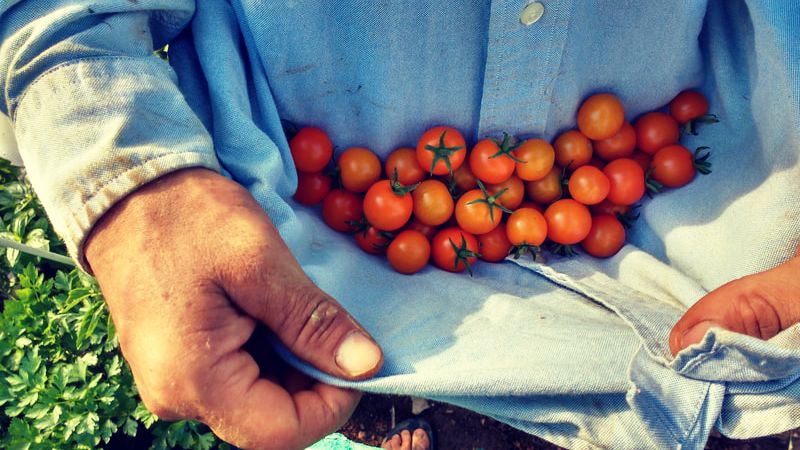
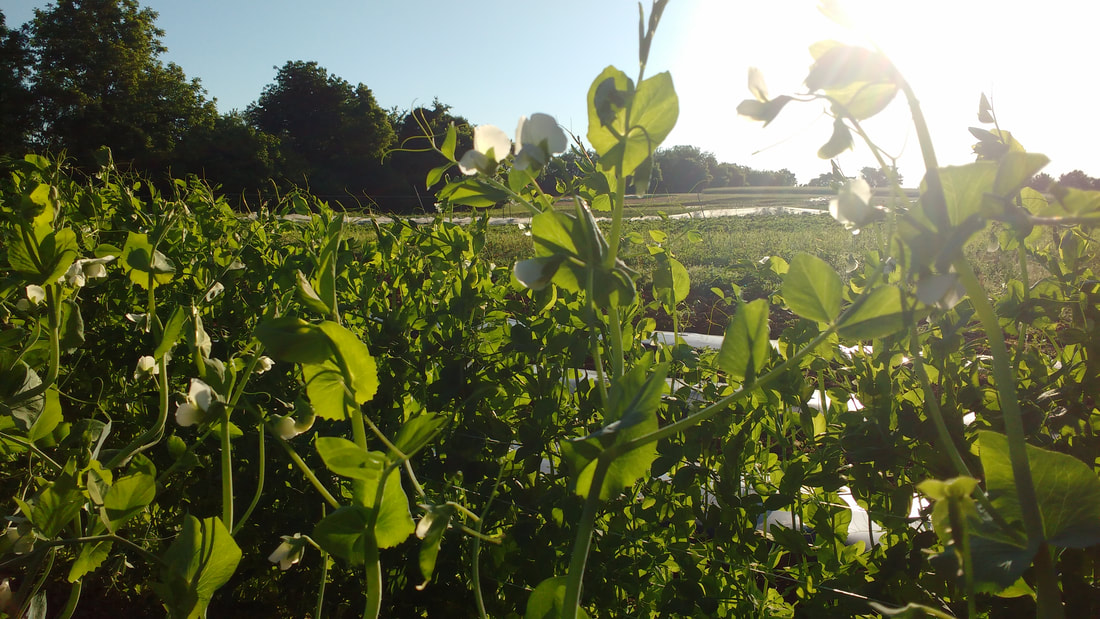
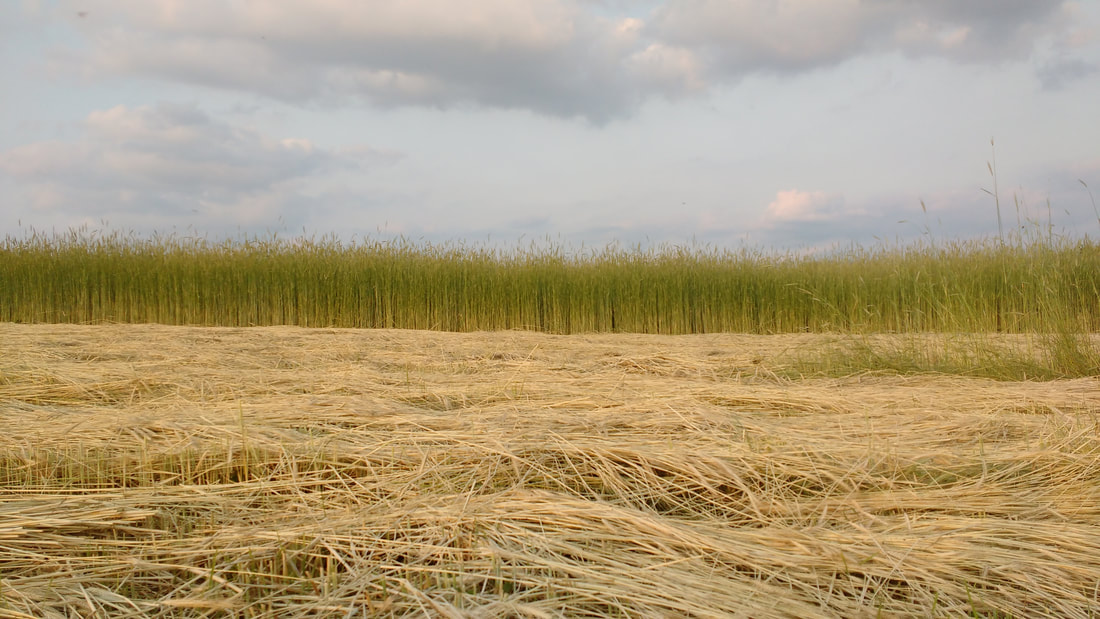
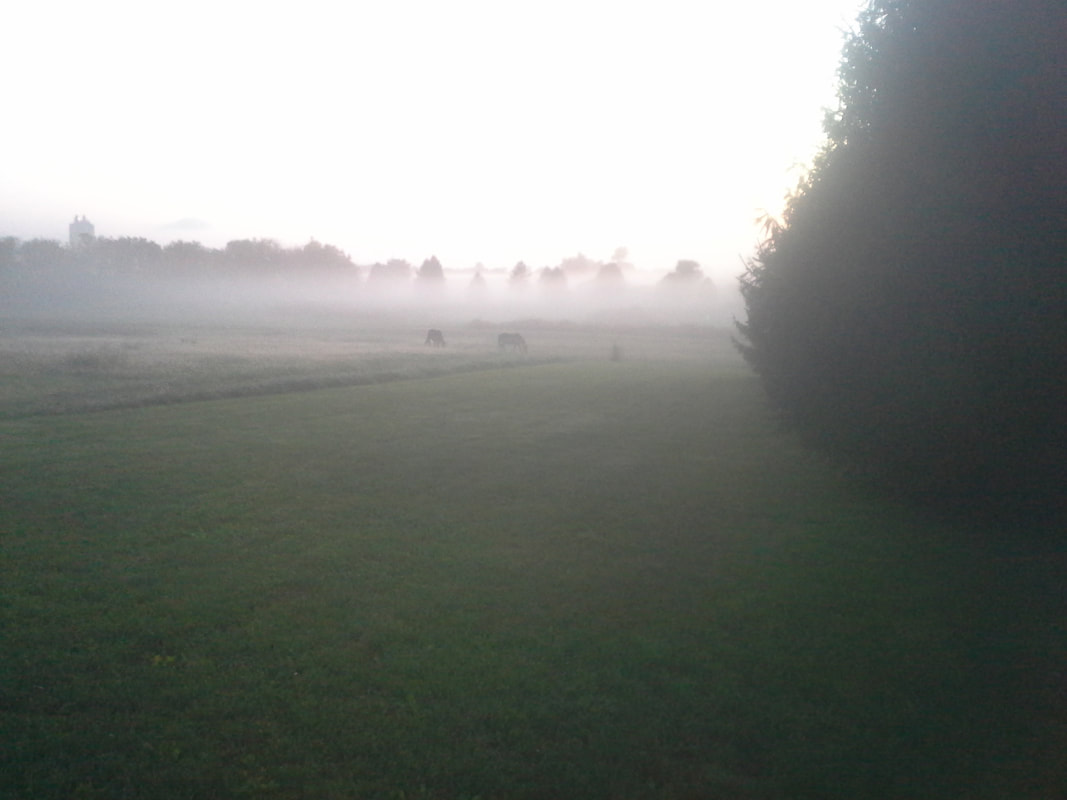
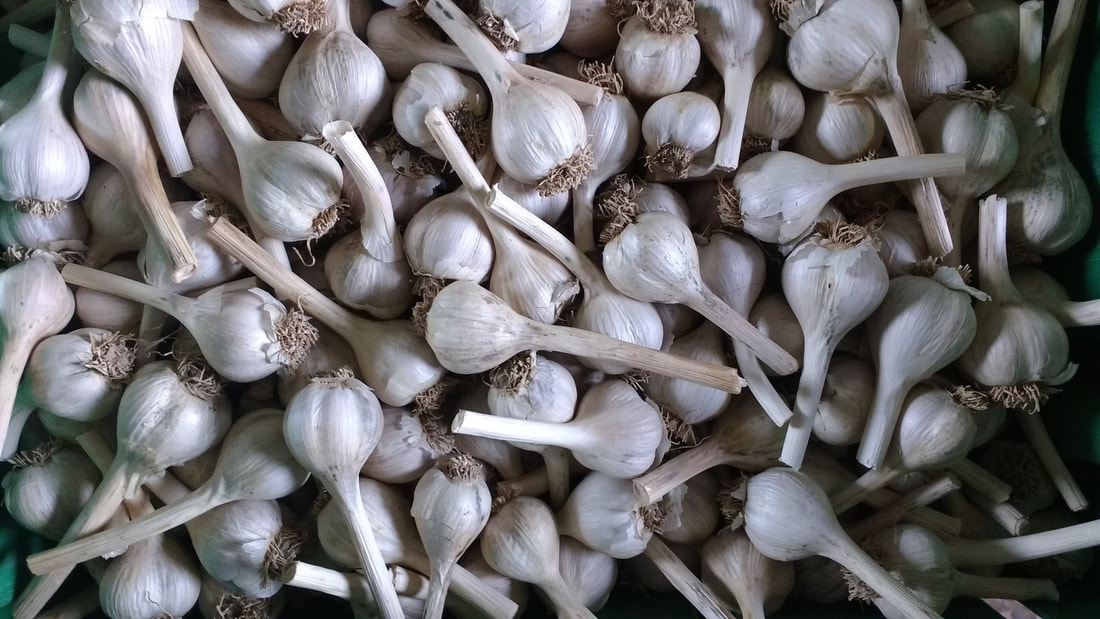
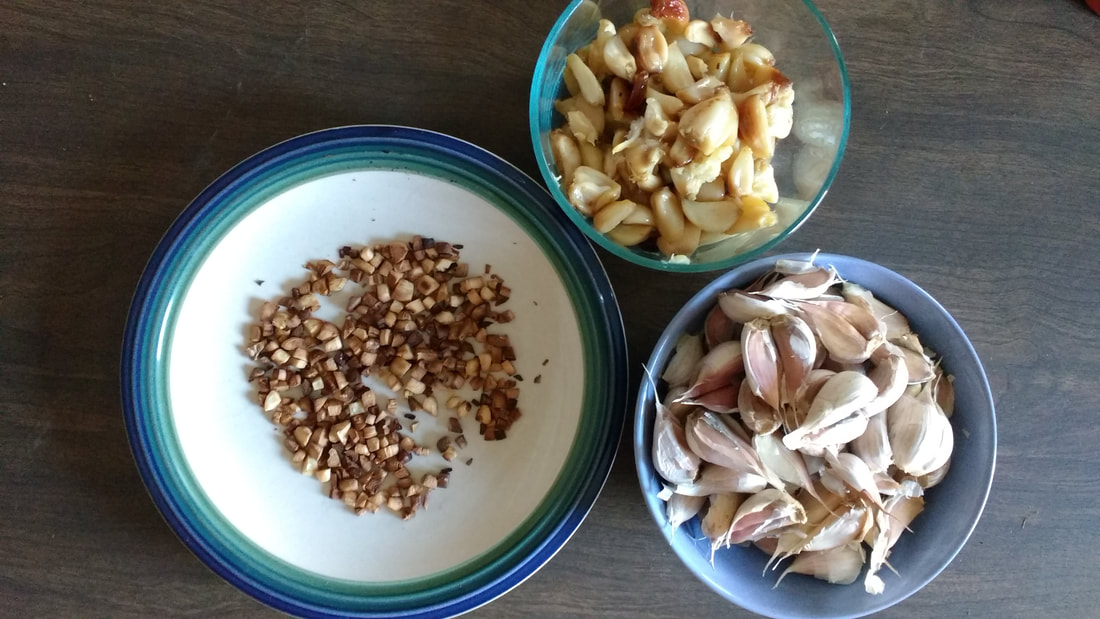
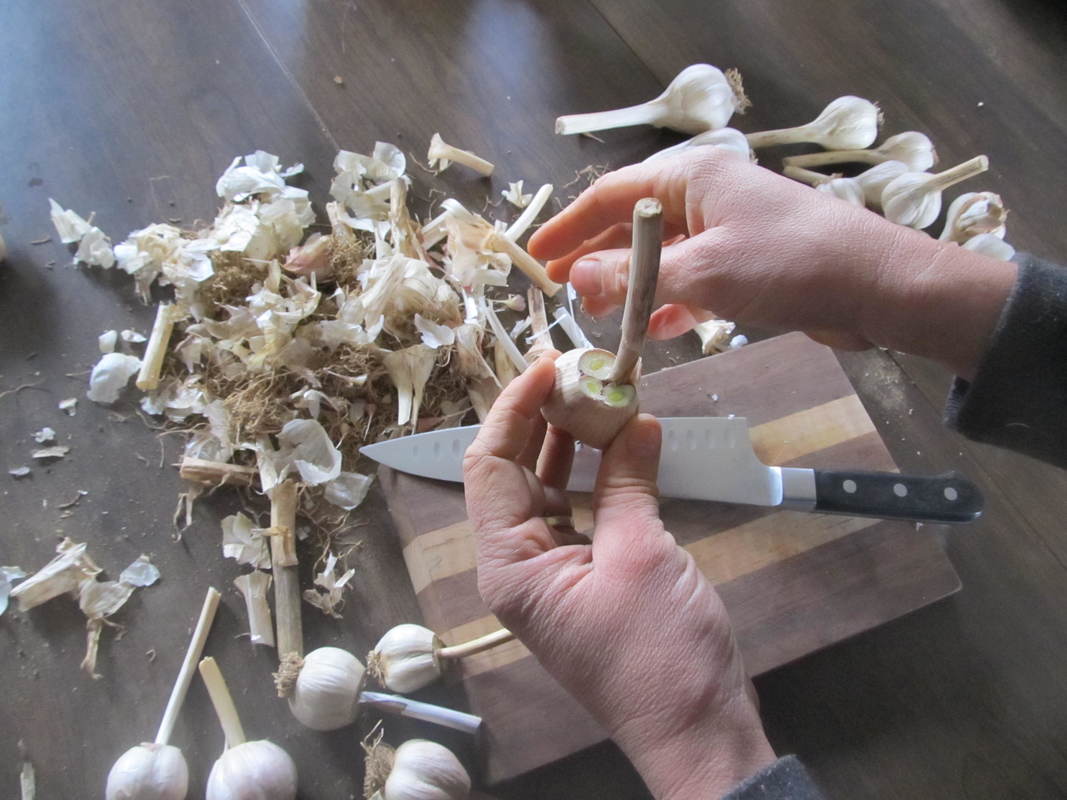
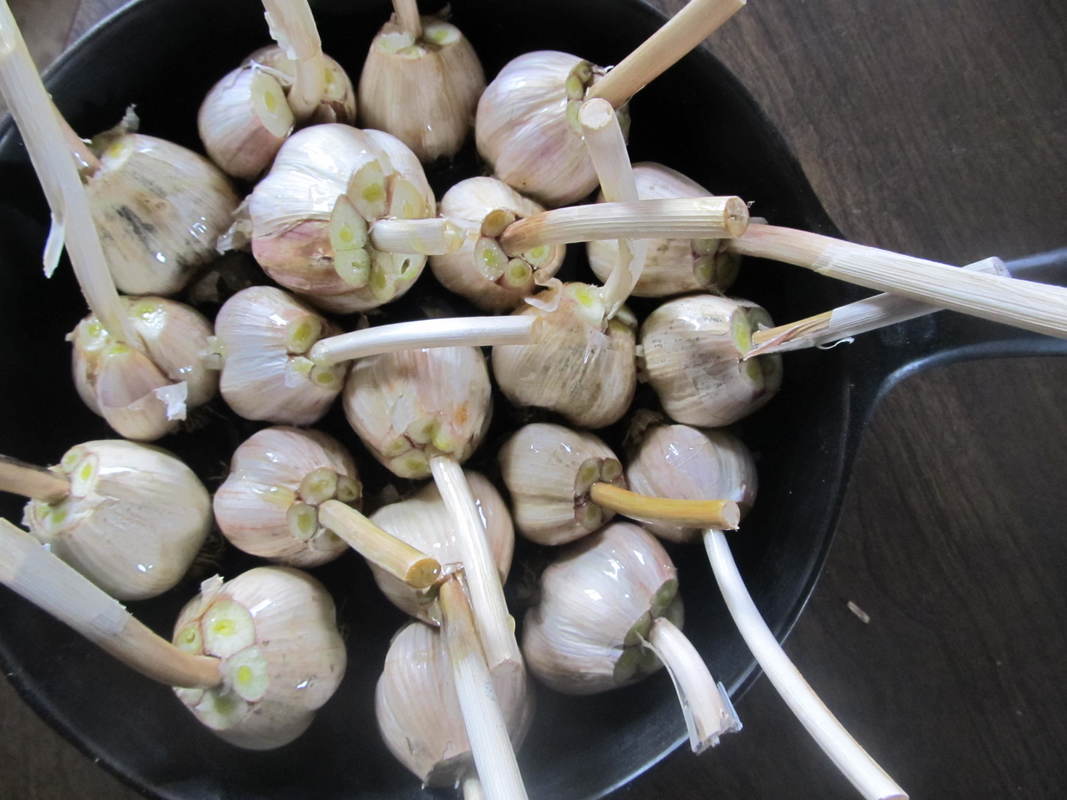
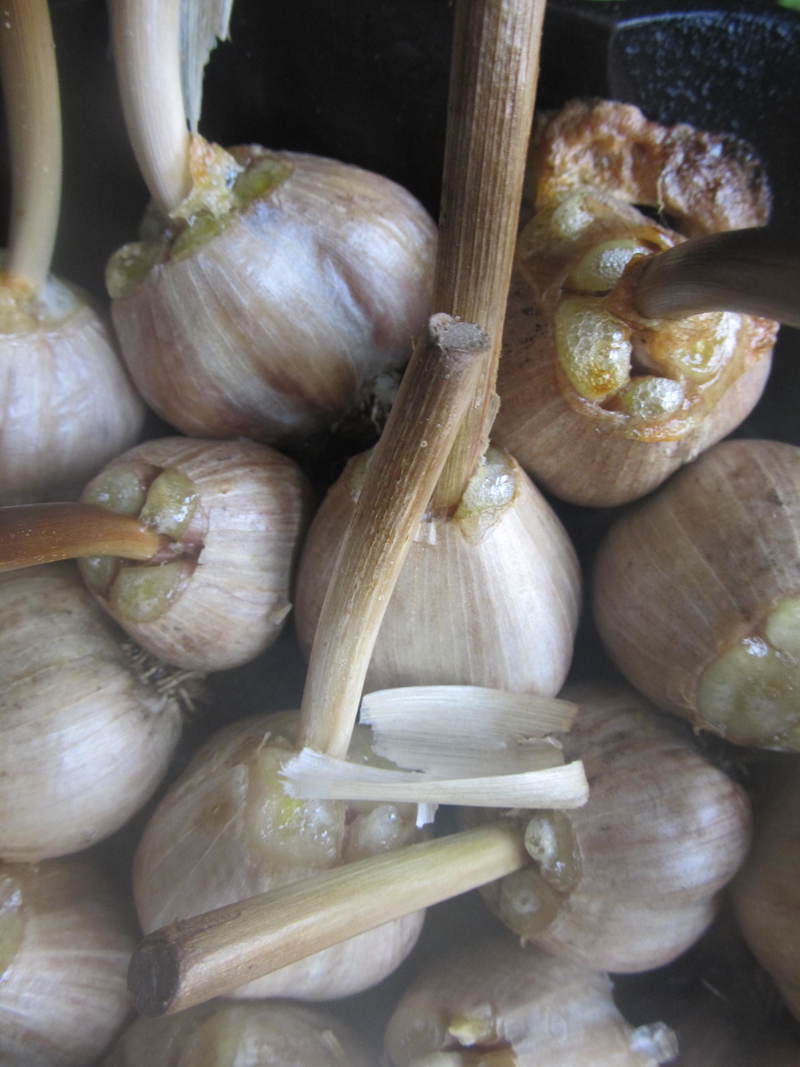
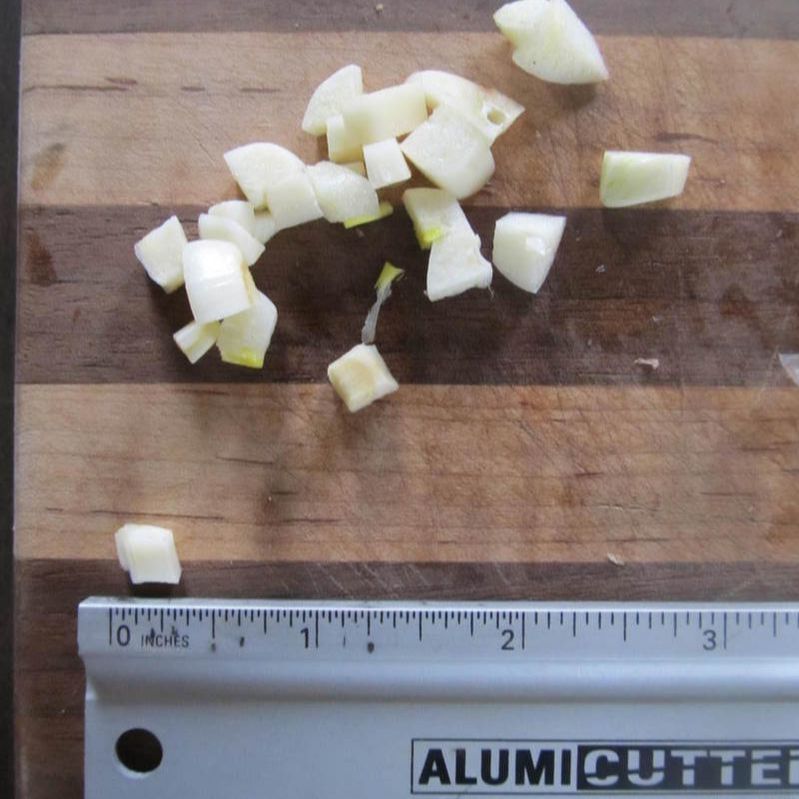
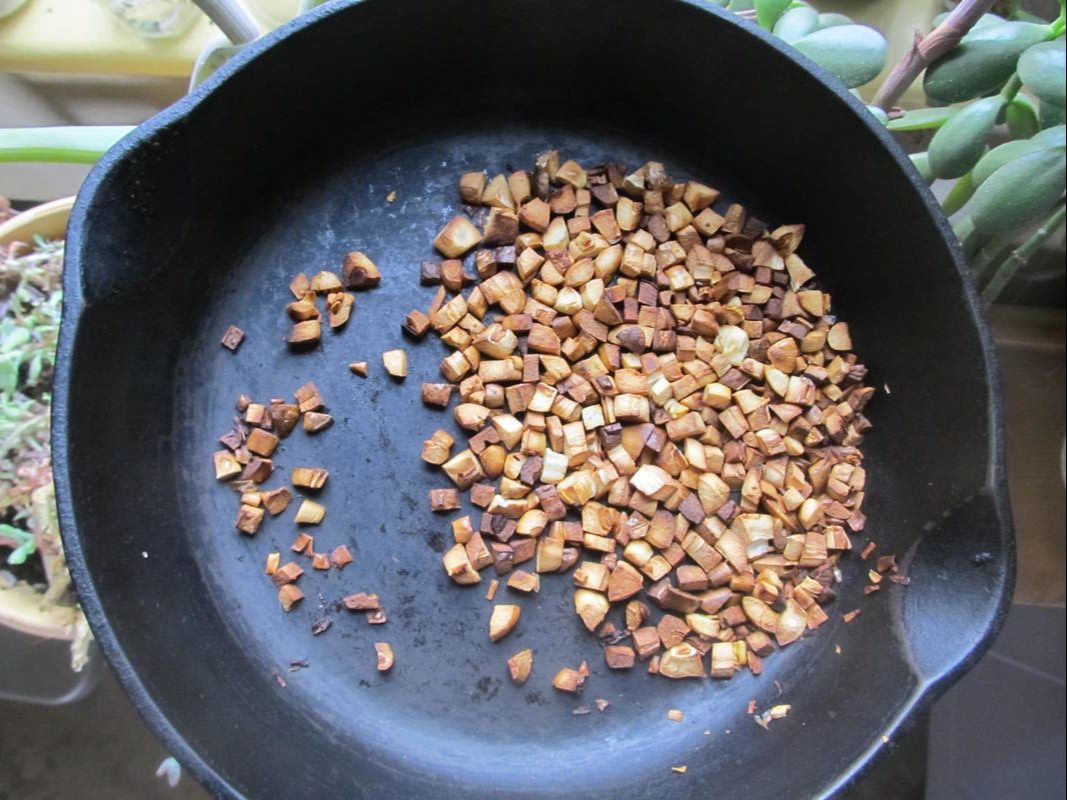
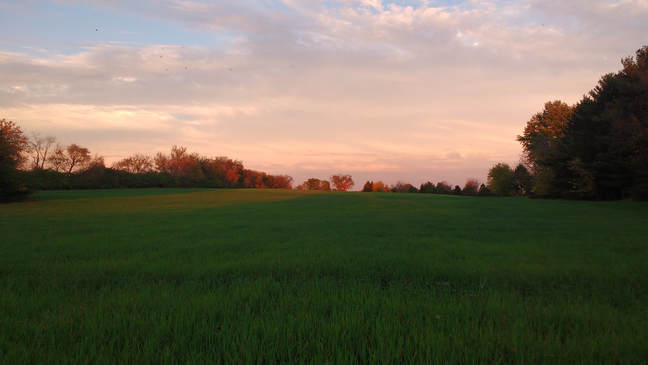
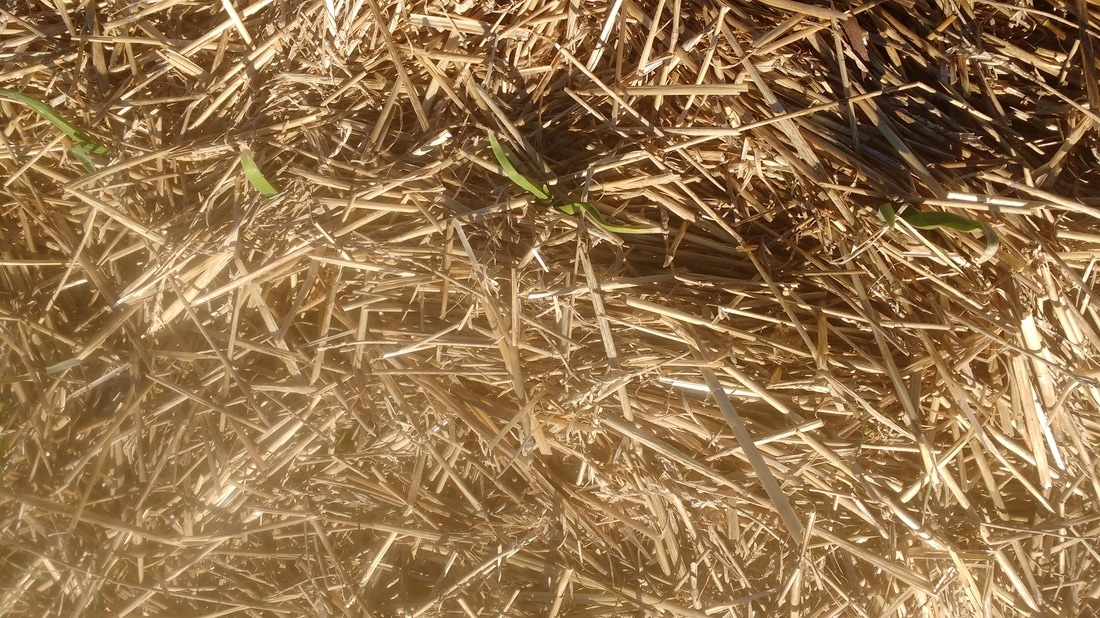

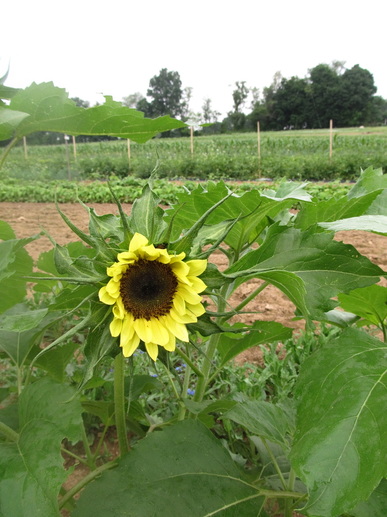
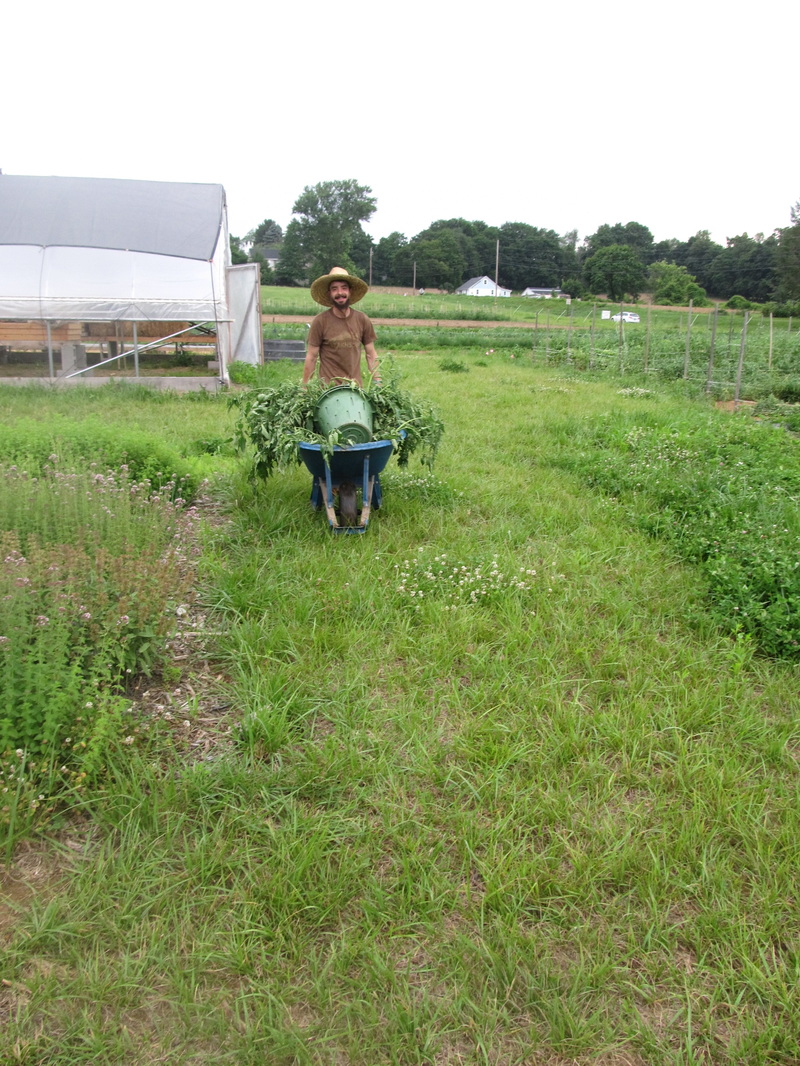
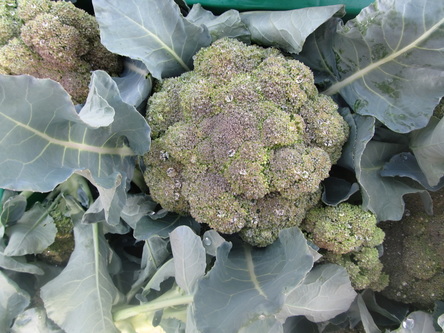
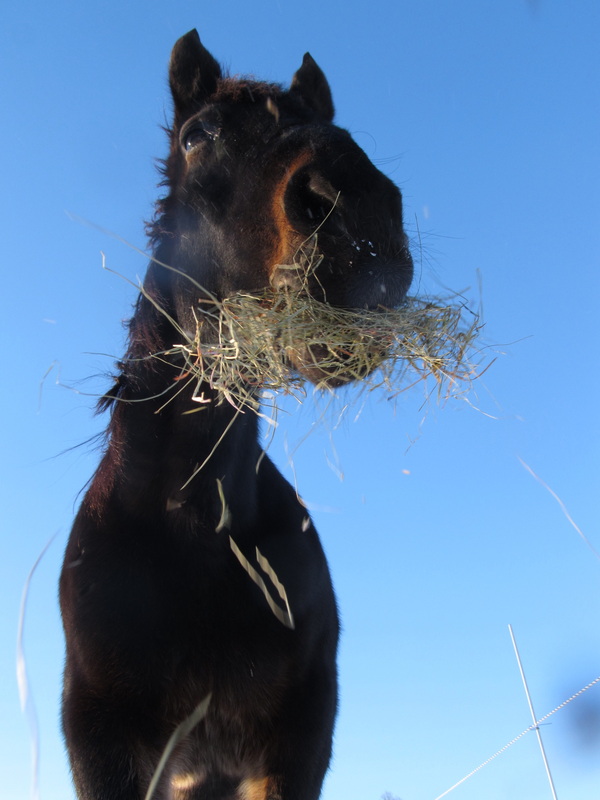
 RSS Feed
RSS Feed